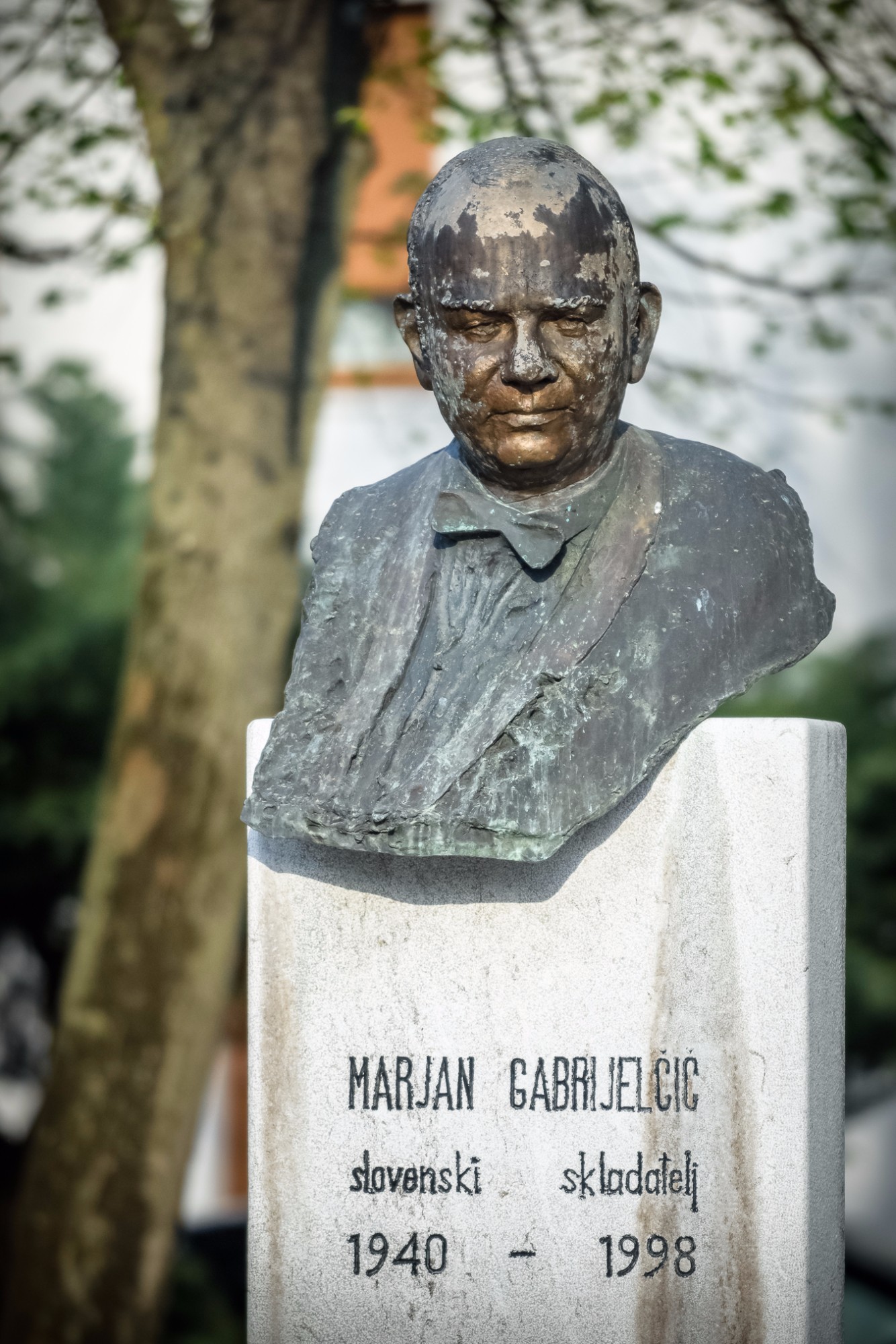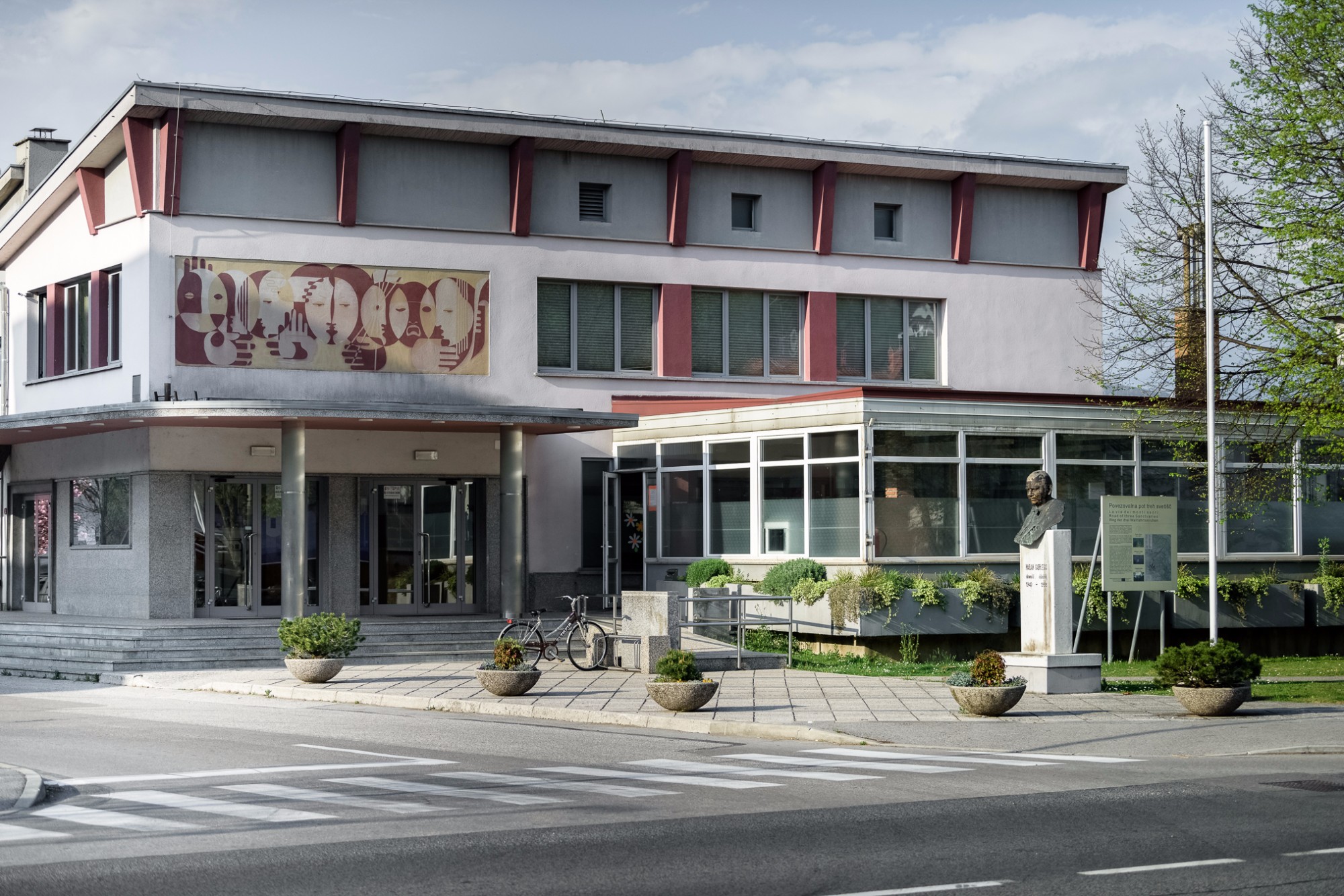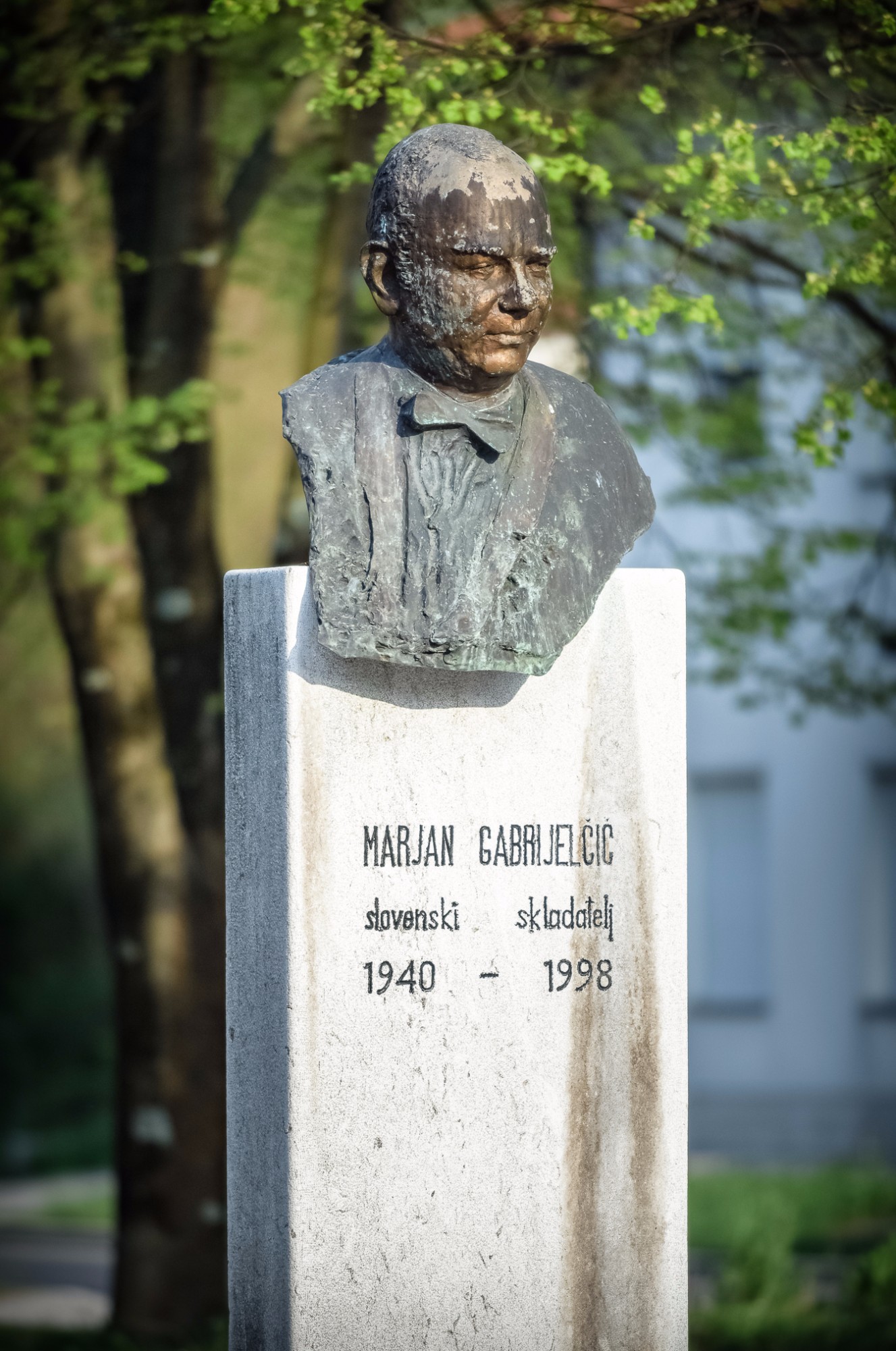In 2004, as part of the 25th Festival of Contemporary Music – Kogoj Days, a bust of composer Marijan Gabrijelčič made by sculptor Mirsad Begić was erected on Kontrada Square in Kanal, a settlement on the Soča River. Relocated in 2008, the memorial now stands in front of the Cultural Centre in Deskle.
Marijan Gabrijelčič
Composer, music critic, educator and choirmaster Marijan Gabrijelčič (1940–1998) occupied important positions in Slovenian music institutions. With an inclination towards music tradition, he influenced the guidelines of the concert repertoire and applied himself to both composing and music criticism, in his reviews tending to admonish composers who sought new and unconventional stylistic solutions. The bulk of his output comprises vocal music, with notable settings of poems by Srečko Kosovel.
His first music teachers were conductor Anton Nanut and educator Makso Pirnik. He specialised in composing in the class of the influential Lucijan Marija Škerjanc, and graduated in music education from the Academy of Music in Ljubljana.
As artistic director of the Slovenian Philharmonic between 1969 and 1975, Gabrijelčič set out the programme guidelines of the Philharmonic’s concert series, relying mainly on the mainstream repertoire from the treasury of international and Slovenian music, that is, twentieth-century classics. Among the highlights of his tenure are the appearances of several notable guest conductors, including Sergiu Celibidache, and the first performance of the Slovenian Philharmonic Orchestra in Carnegie Hall, New York.
He devoted his last years to music education. He taught music theory subjects and composition at the Academy of Music in Ljubljana, an institution he headed for eight years as dean. Possessing great enterprising initiative, Gabrijelčič played a major part in establishing some notable music festivals, including The Kogoj Days. He contributed articles to several leading Slovenian publications (Delo, Dnevnik, Mladina, etc.).
At first, his creative zeal was informed by admiration for the work of Marij Kogoj. Under his influence, Gabrijelčič wrote his first choral compositions and vocal music, including Jesen (Autumn), the lieder Kraška jesen, Vetri v polju and Riba Faronika (Karst Autumn, Winds in the Field and Faronika the Fish) – settings of poems by Kosovel, and a lied Dva vrana (Two Ravens), based on a text by Dane Zajc. His vocal music exhibits the influences of modality, secundal relationships in melodic texture, which follows the rhythmic characteristics of folk idiom. His harmonic language is occasionally marked by polytonality, while a dense polyphonic fabric prevails in his choral output.
Some of his particularly well-known pieces are the vocal-instrumental Preludij (Prelude) for tenor, female choir, harp and strings, and Velika maša (High Mass), a symphonic epitaph for orchestra, choir and narrator, dedicated to the memory of victims of wars (based on a text by Ivan Cankar). Two of his most frequently performed instrumental works are Salonica I for woodwind quintet and Salonica II for woodwind and brass instruments and timpani.
Gabrijelčič scored over 150 works, which enriched Slovenia’s choral music treasury.
Maia Juvanc



